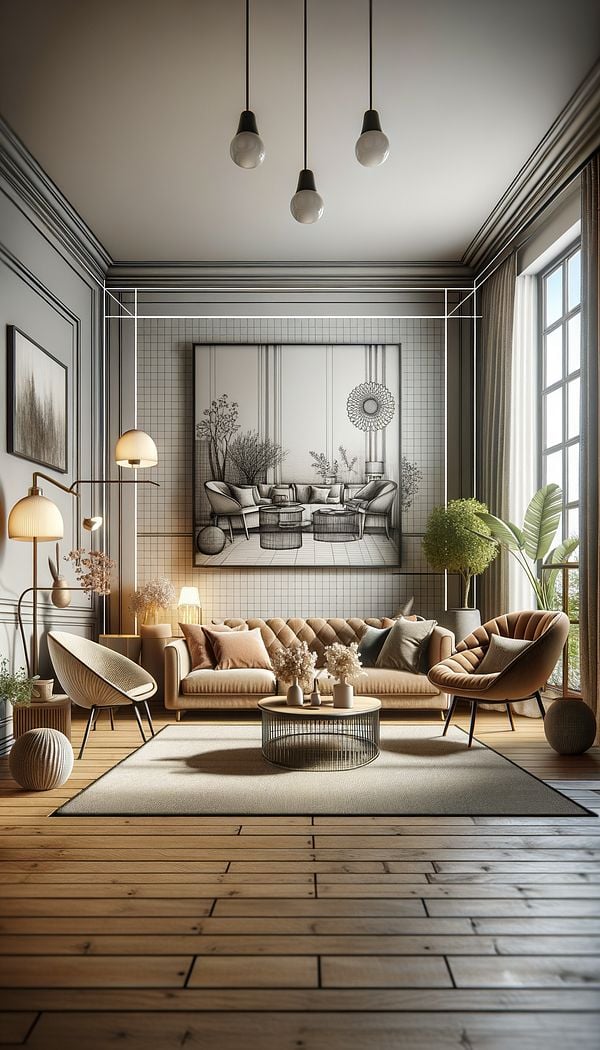What is Proportion?
Proportion in interior design refers to the ratio between elements in a space.
Description
Proportion is a fundamental principle in interior design that focuses on the relationship and ratio between elements within a space to create harmony and balance. It is about understanding how the size of objects in a room relates to each other and to the space as a whole. Proper proportion ensures that each piece contributes to a cohesive look, without any one element overpowering others or seeming out of place.
This principle is closely linked to scale, although they are distinct concepts. Scale refers to how the size of one object relates to the human body, while proportion looks at the relationship between multiple objects. By carefully considering proportion, designers can create spaces that are visually pleasing and functionally appropriate for their intended use.
In practice, designers use proportion to guide decisions on furniture placement, the size of decorative objects, and the layout of architectural elements. For example, a large living room might include oversized furniture to maintain proportion, while a smaller room would benefit from more suitably sized pieces. Proportion also plays a crucial role in grouping objects, ensuring that collections of items feel unified rather than random or cluttered.
Usage
When designing a living room, for example, a designer might choose a large sofa and pair it with smaller accent chairs to maintain proportion in the space. In another scenario, the spacing and size of wall art are adjusted to harmonize with the furniture below, ensuring an overall balanced aesthetic.
FAQs
-
How does proportion differ from scale?
Proportion refers to the relationship between the sizes of multiple objects in space, whereas scale focuses on how the size of an object relates to the human body or its surrounding space. Both are crucial for achieving balance but address different aspects of design.
-
Why is proportion important in interior design?
Proportion is essential for creating harmonious, balanced spaces that are visually appealing and function well. It ensures that no single element dominates the space uncomfortably, and that the space feels cohesive.
-
How can I improve the proportion in my space?
You can improve the proportion in your space by being mindful of the size and placement of furniture and decorative objects. Ensure that items relate well to each other and to the size of the space itself. It often helps to plan layouts before purchasing items to avoid scale and proportion missteps.
Practical Application
To apply proportion in your designs, start by evaluating the space and existing elements. Consider the size of the room and the visual weight of objects. Aim to balance larger pieces with smaller ones, and group items in a way that feels cohesive. Use a mix of sizes in furnishings and decor to achieve a balanced look. Planning and visualizing your layout ahead of time can also help in making informed decisions that honor the principles of proportion.
-
Architectural Elements199 articles
-
Furniture Types599 articles
-
Decorative Objects240 articles
-
Space Planning & Layout134 articles
-
Decorating Principles & Elements330 articles
-
ChandelierA chandelier is a decorative ceiling-mounted light fixture.
-
Jewelry ArmoireA jewelry armoire is a freestanding cabinet designed specifically for storing and organizing jewelry and accessories.
-
AcroteriumAn acroterium is an ornamental pedestal or statue located at the apex or corners of a building's roof.
-
Pegged FurniturePegged furniture is furniture that has been assembled using pegs to join its parts.
-
Welsh CupboardA Welsh Cupboard is a traditional piece of furniture originating from Wales, characterized by its unique combination of storage and display sections.
